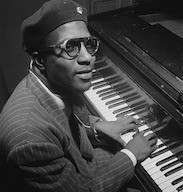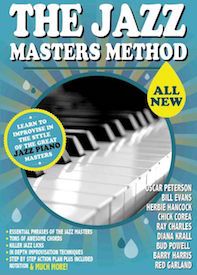Bebop Licks – Easy Video Tutorial
 Would you like to learn how to build your own bebop licks? Great! You’ve come to the right place.
Would you like to learn how to build your own bebop licks? Great! You’ve come to the right place.
In today’s lesson video you’re going to learn an easy formula you can use to build your own bebop licks over any type of chord.
Yes, there are 1000’s of different jazz pattens and bebop licks every jazz musician should eventually master. But, in today’s lesson we’ll just cover a great starter one that every aspiring jazz musician needs to know.
Easy Bebop Licks Construction Tutorial Video
To get started take 3 minutes and watch this video where I show you a common pattern that will help you get started building your own bebop licks.
Then, from there scroll down for some very important additional tips to help you build your improvisation skills to the next level.
Chromatics And Building Bebop Licks
In the video above I demonstrated a concept called a chromatic enclosure pattern.
Essentially that’s just a fancy term for saying that we use chromatism to target chord tones in our improvisation. This concept of targeting chord tones and resolving properly is a critical element of many great bebop licks.
 When you look at the improvisations of many famous bebop musicians you’ll see that targeting chord tones on strong beats is a huge part of their improvisational style.
When you look at the improvisations of many famous bebop musicians you’ll see that targeting chord tones on strong beats is a huge part of their improvisational style.
I’m talking about famous players like Charlie Parker, Bud Powell, Sonny Stitt, Barry Harris, Al Haig, Sonny Rollins, and Dizzy Gillespie.
You’ll even hear this technique being used at times by players like Oscar Peterson, Bill Evans, and Herbie Hancock and in the compositions of Monk.
If you want to be a better jazz improviser you need to get good at enclosure patterns. So, how do you do that?
How Chord Tones Can Be Used In Jazz Improv
 Alright lets break down the concepts I demonstrate in the video even further. Let’s say that you’re just soloing over like a Dm7 chord.
Alright lets break down the concepts I demonstrate in the video even further. Let’s say that you’re just soloing over like a Dm7 chord.
Well here are our chord tones right. Root, third, fifth, seventh, D, F, A, C.
You can build your lines to feature mostly chord tones. This in itself is pretty simple and not too sophisticated.
But, to bring more of that sweet jazz flavor in you’ll essentially play two chromatic notes down into your chord tones. And when you get these chromatic enclosures down in your playing this is where the fun really begins.
- If you’re targeting the root of a Dm7 this is the note D. You’ll play E and then Eb right before.
- If you’re targeting the 3rd of Dm7 then it’s the note F. You’ll play G and Gb right before.
- If you’re targeting the 5th of Dm7 then it’s the note A. You’ll play B and Bb right before.
- If you’re targeting the 7th of Dm7 then it’s the note C. You’ll play D and Db right before.
One thing to keep in mind is that you shouldn’t just use the chromatics on any random beat.
It will sound best if you resolve onto the chord tone on a strong beat. This means if you’re in 4/4 time that you should mostly resolve on beats 1, 2, 3, or 4.
When, you go deeper into the great bebop licks of the jazz masters you start to truly understand the critical role of rhythm in jazz improvisation.
In fact, if you want to see detailed blueprints of how the best jazz licks are truly constructed then check out this step by step system right here.
A Method For Creating 1000’s Of Your Own Bebop Licks
Do you love the way these chromatics add excitement to simple musical concepts? Do you want to unlock more of your improvisation ability and learn how the jazz masters build great jazz improv lines?
 I have a course that shows you how to build all these lines using enclosure patterns and many other important jazz improv elements.
I have a course that shows you how to build all these lines using enclosure patterns and many other important jazz improv elements.
In fact, I actually teach you all these cool improv devices while showing you how to play licks of the great jazz piano masters. It’s called The Jazz Masters Method DVD.
It’s a very popular program and thousands of students have trained with it to build real jazz improvisation skills.
Alright, enjoy your practice! Start building some of your own bebop licks using enclosure patterns and watch your playing skyrocket. Thanks for hanging out and have an amazing and soulful musical day.
